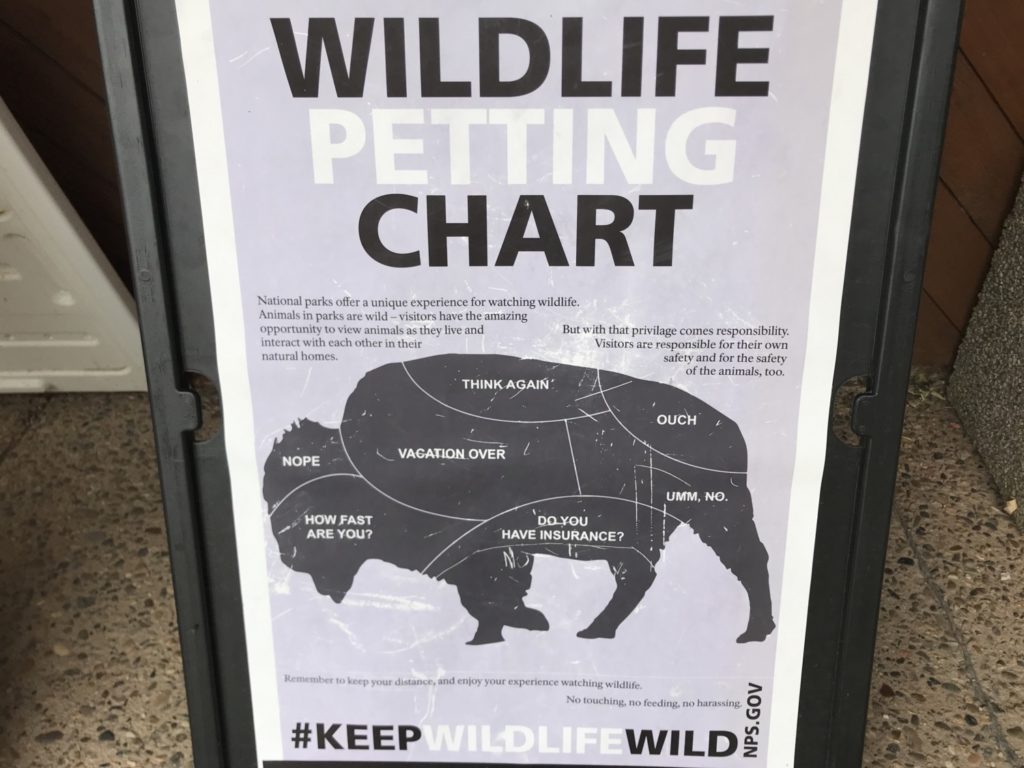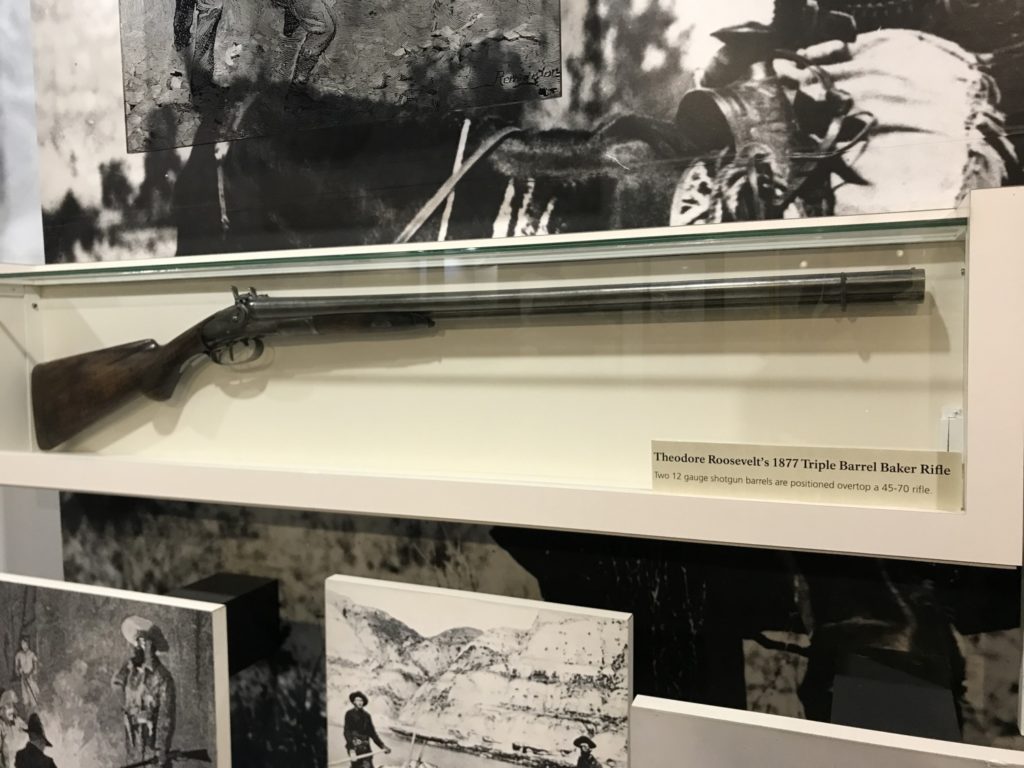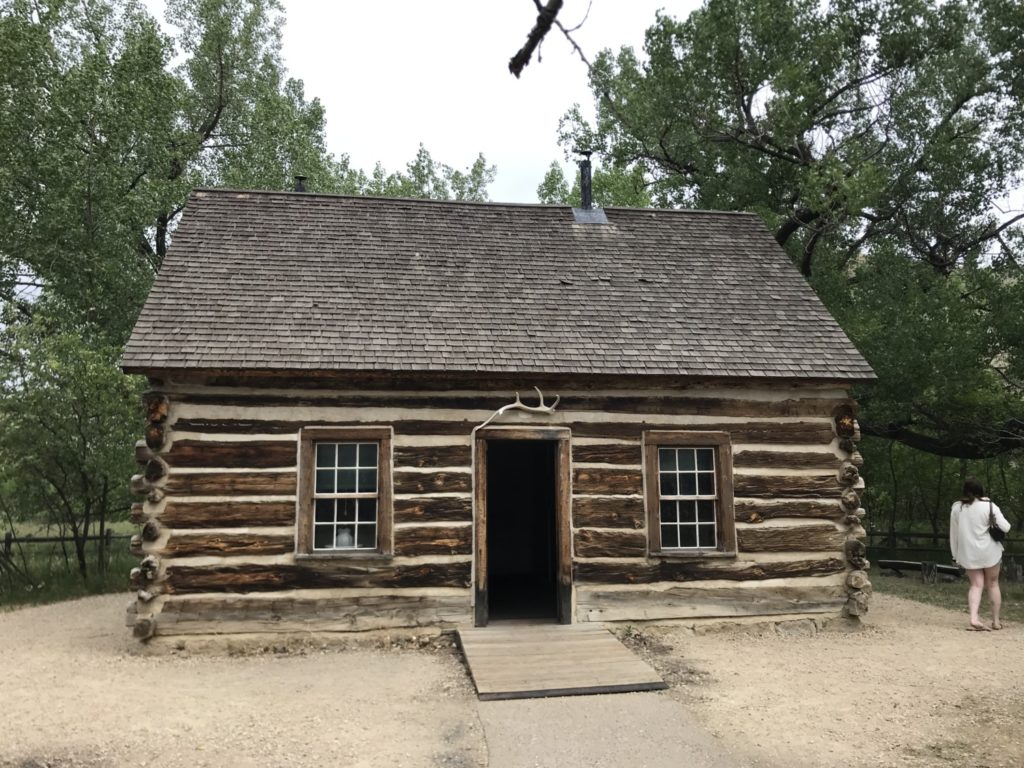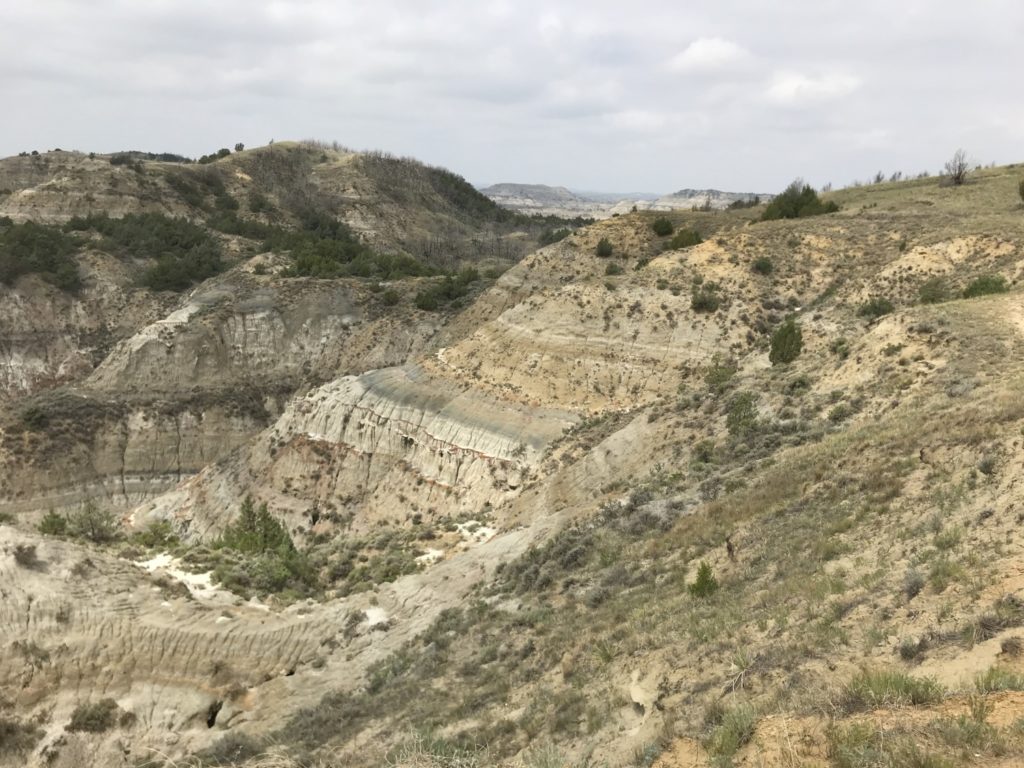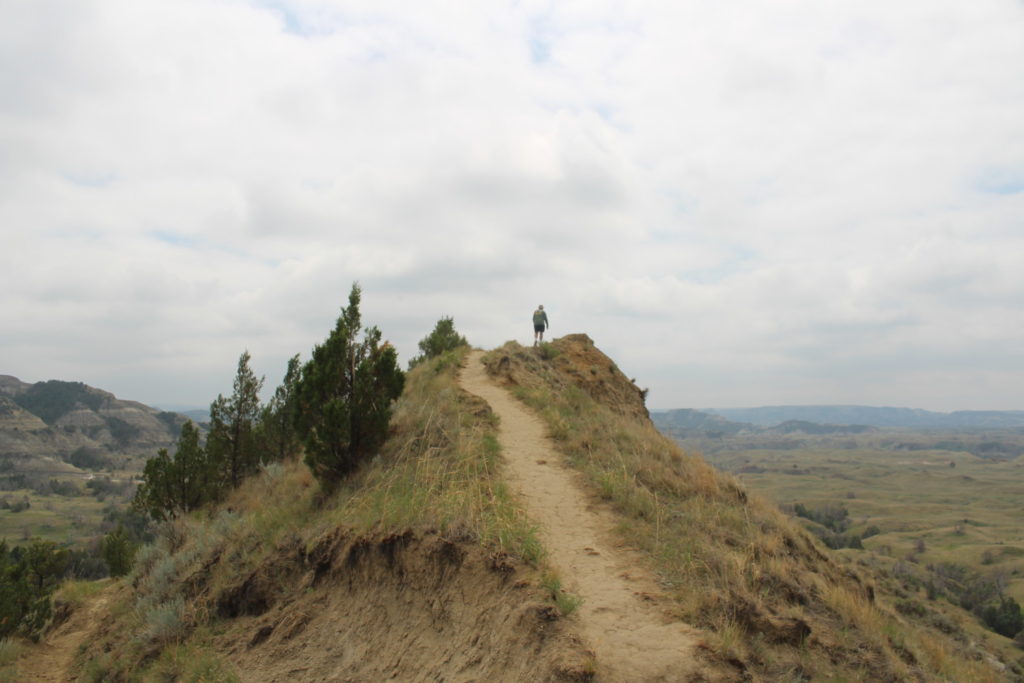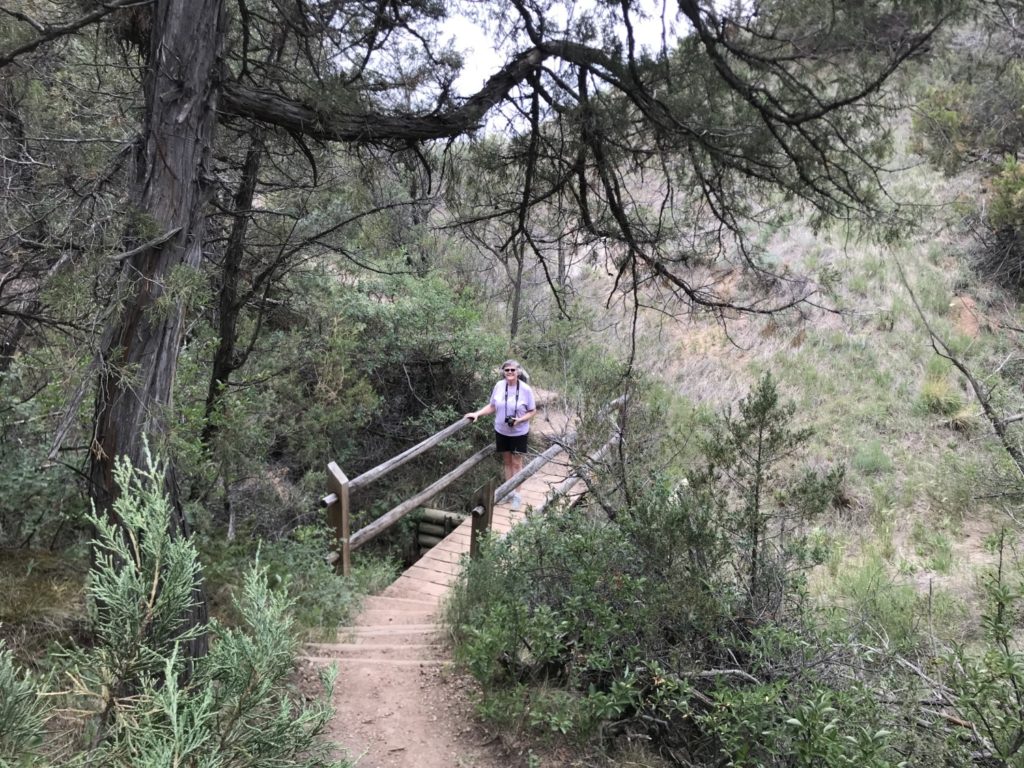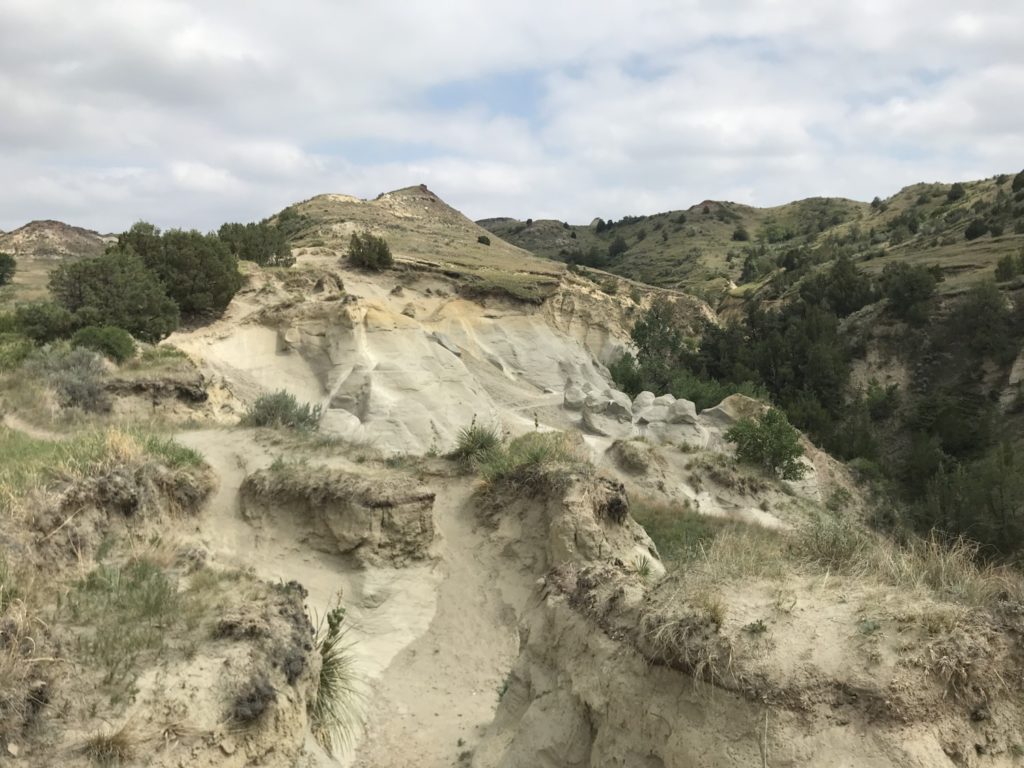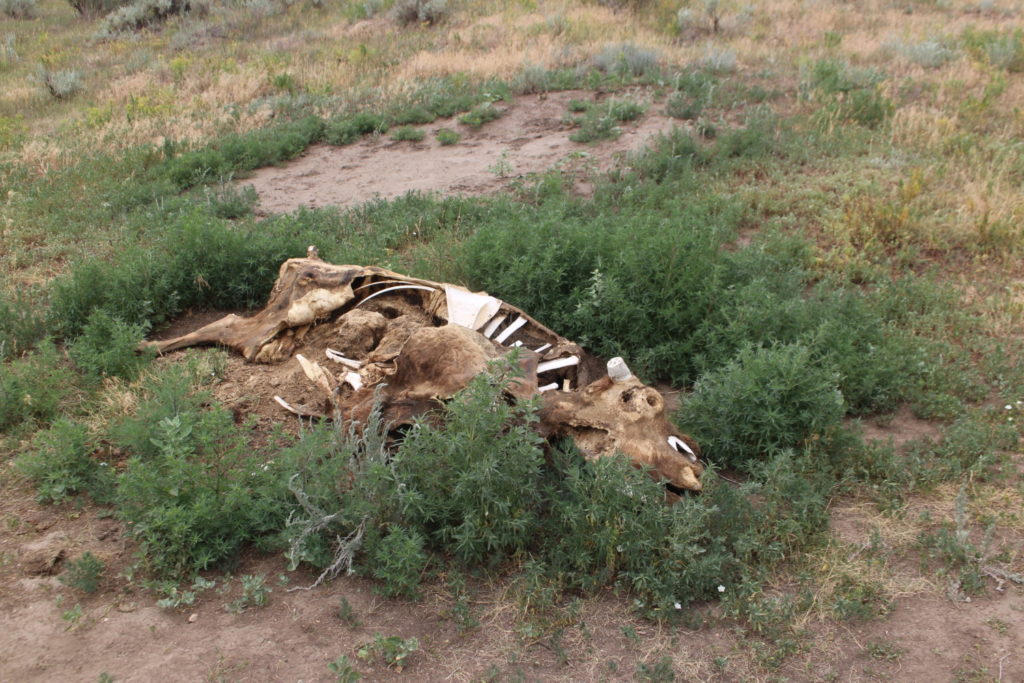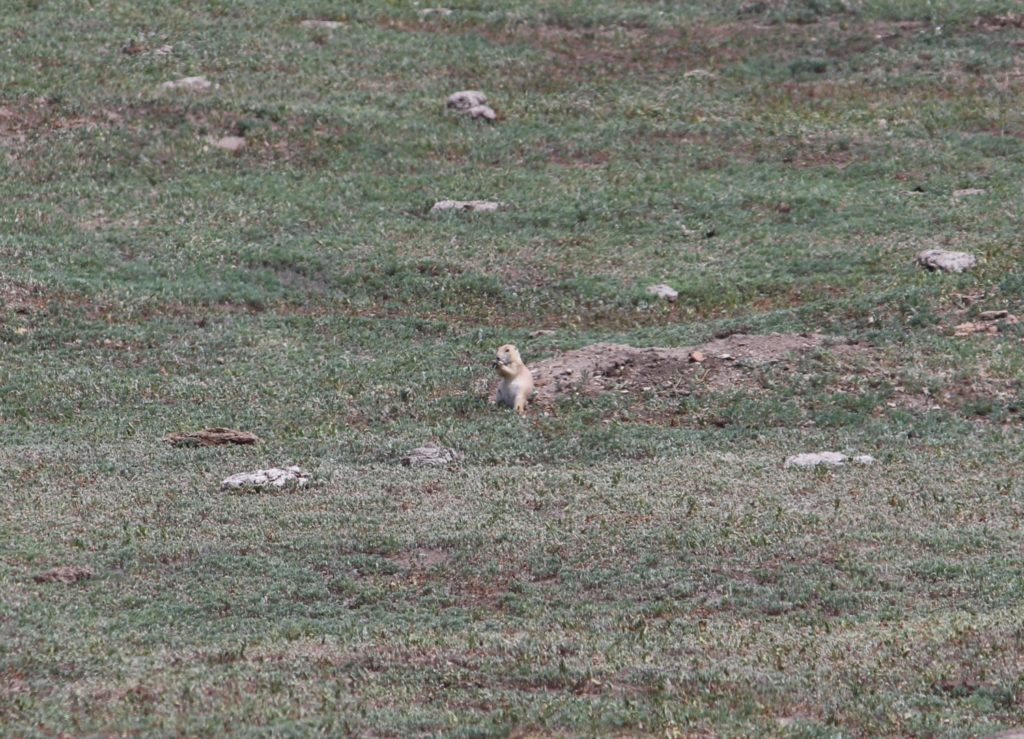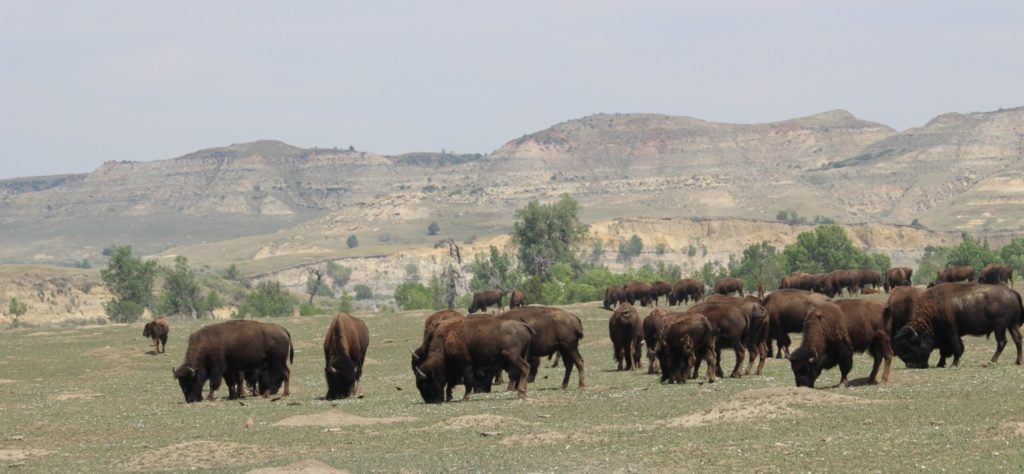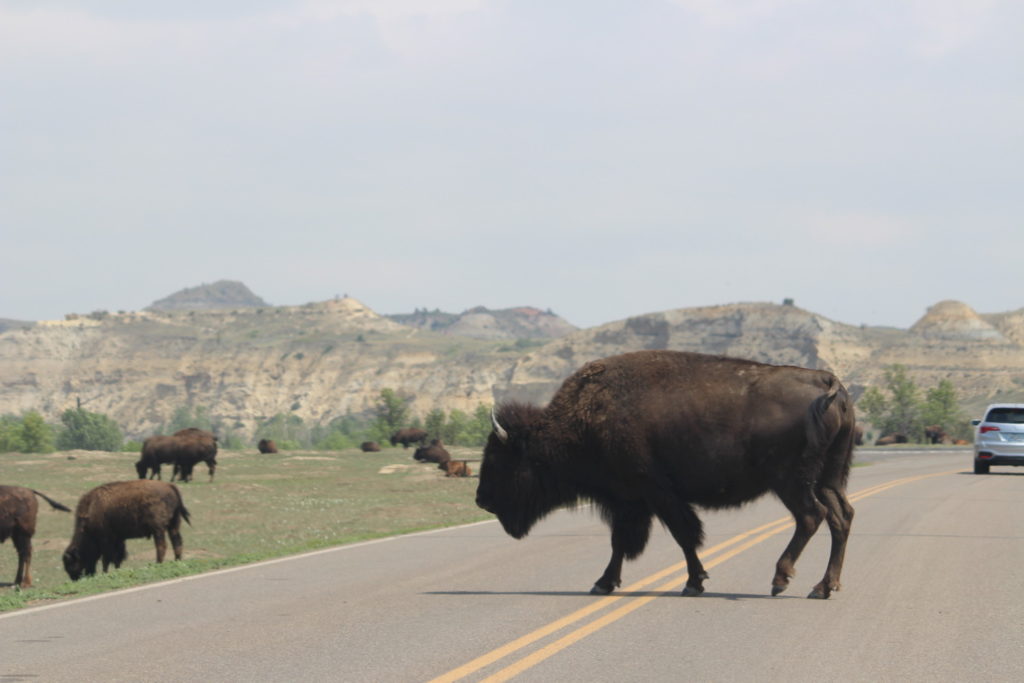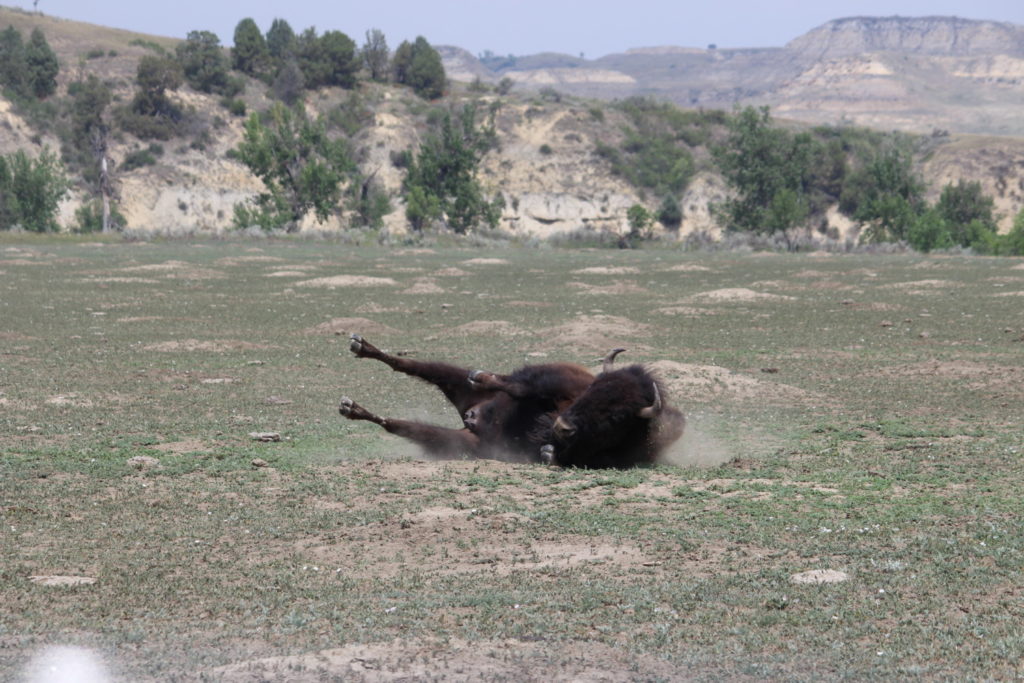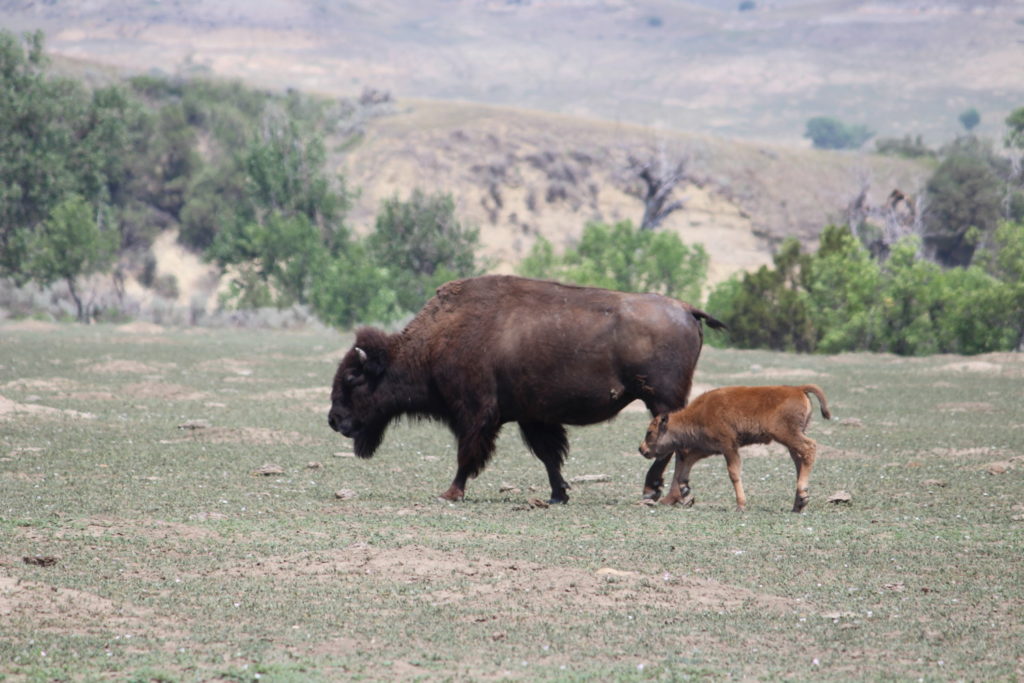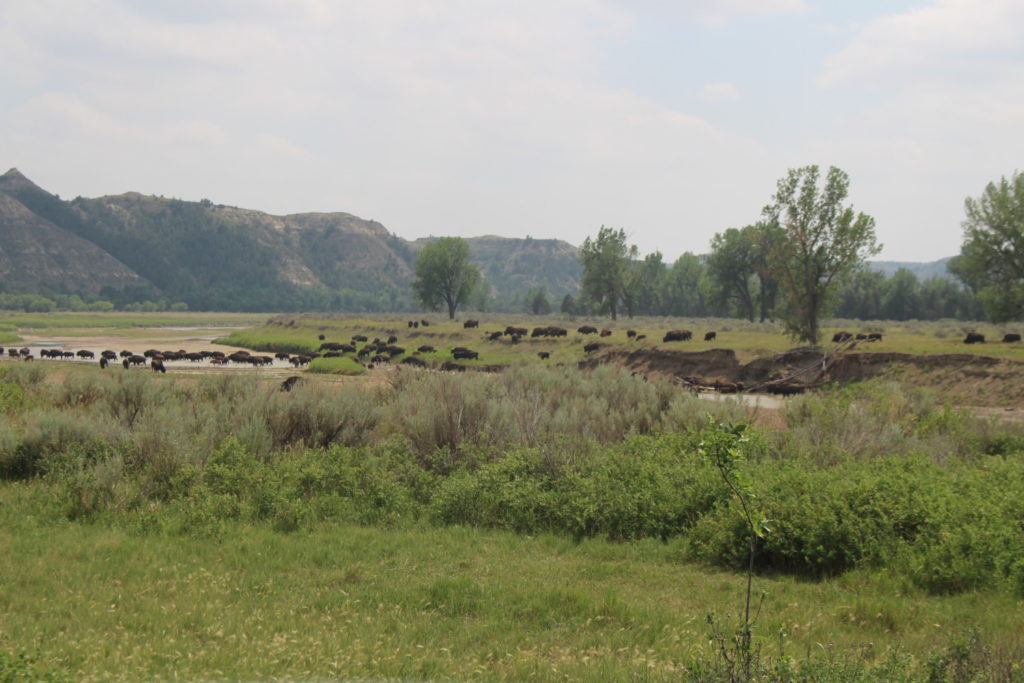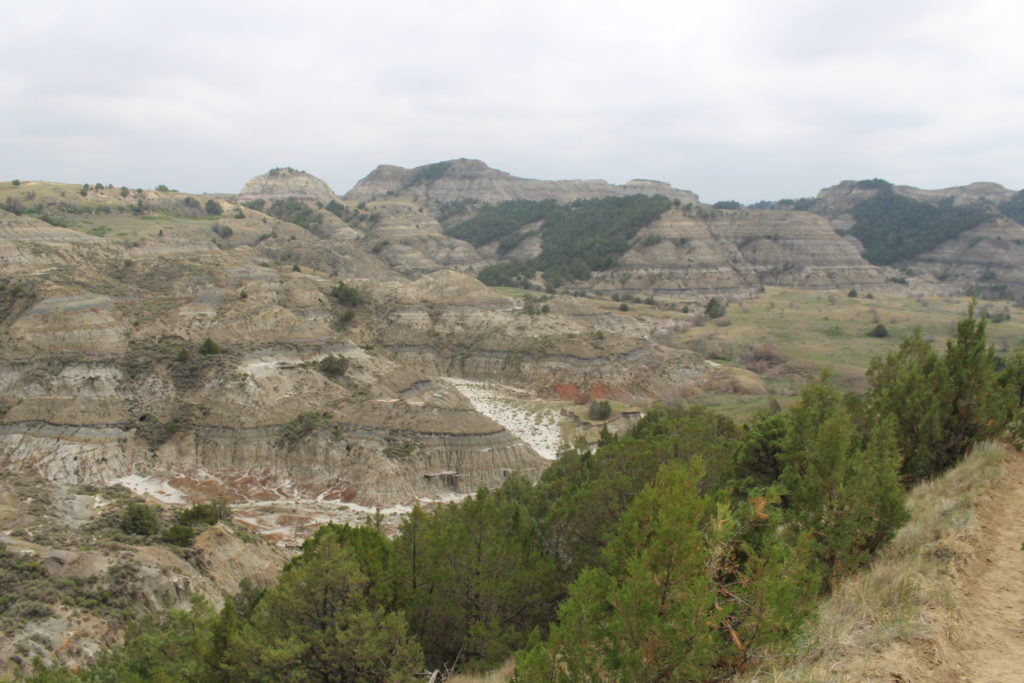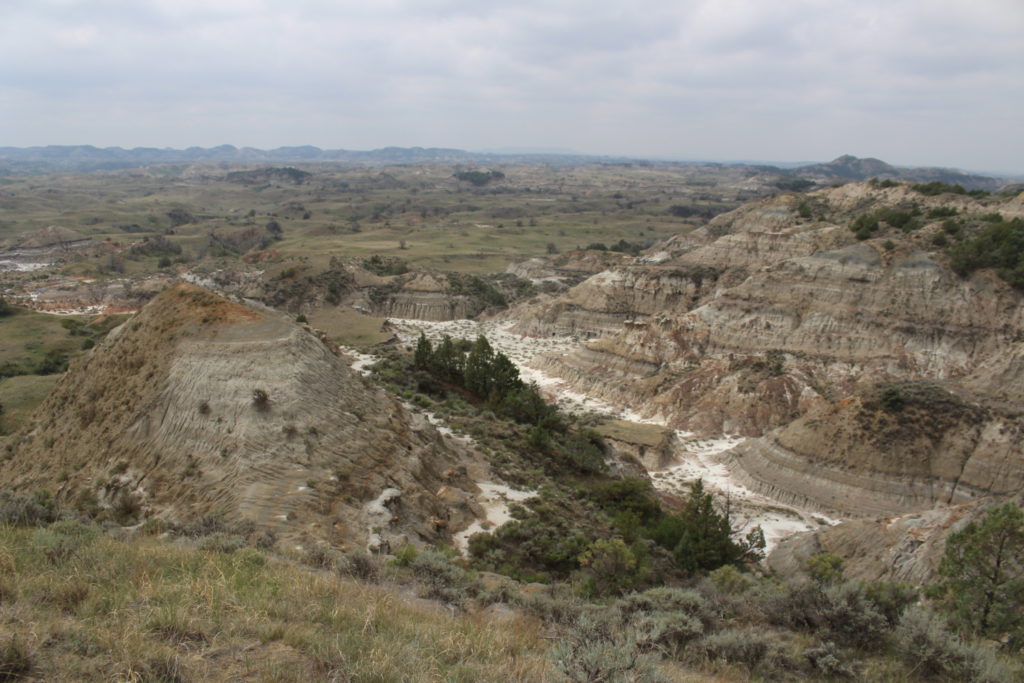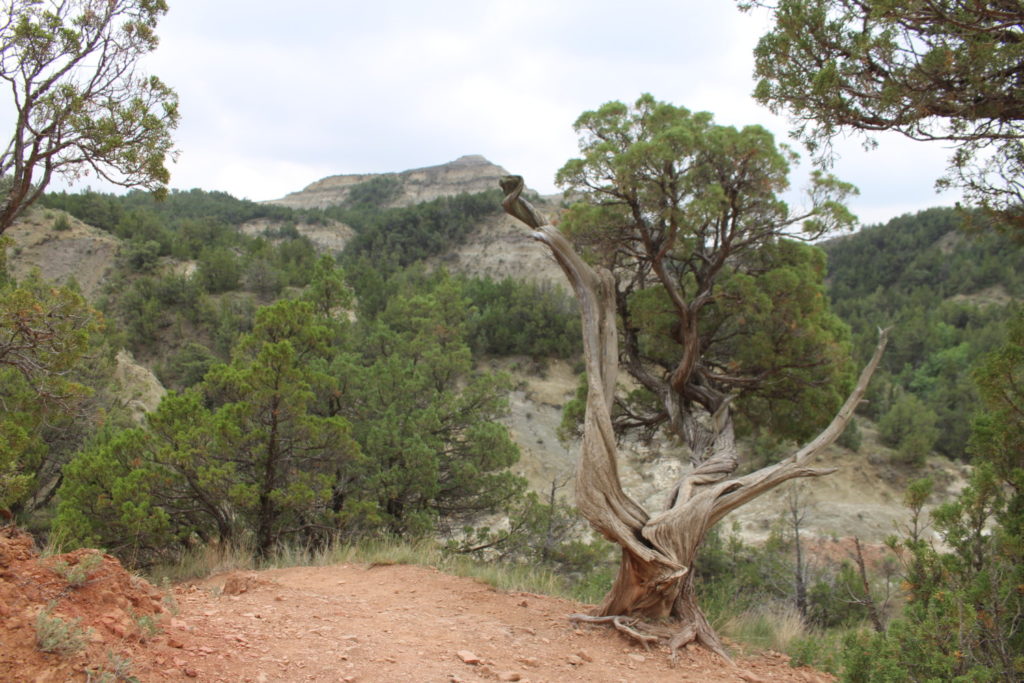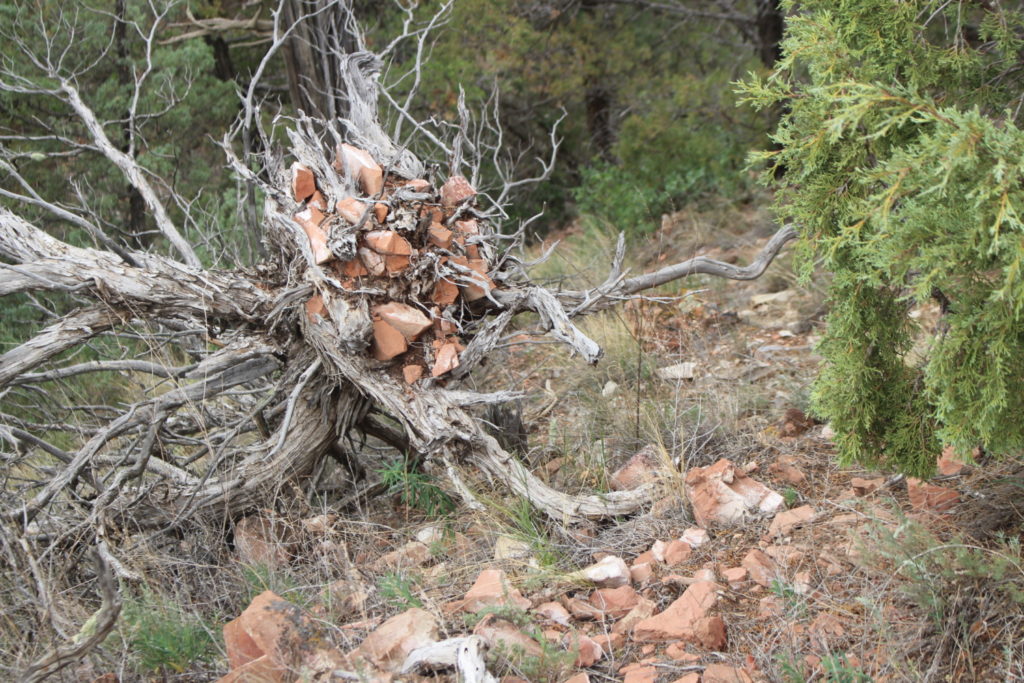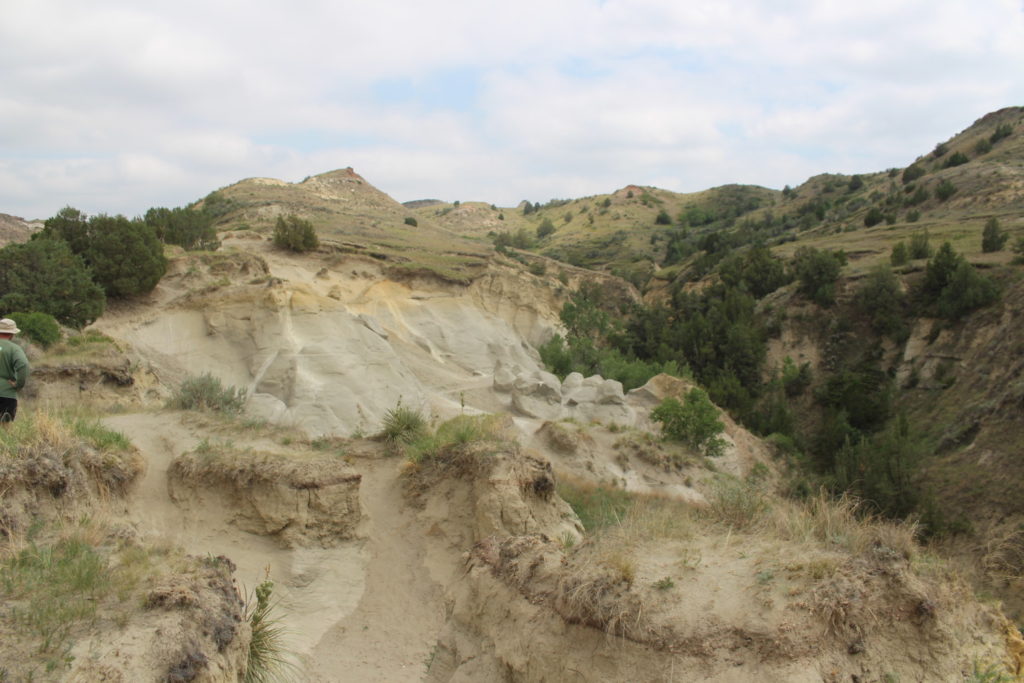Today I will focus on the South Unit of Theodore Roosevelt National Park. This is the part of the park visited by the most people and what people generally think of when they say they have been to the park. Medora is the gateway to the park and I will write about Medora more in a future post.
The South Unit of Theodore Roosevelt National Park is circled by a wonderful scenic drive. Although the drive is usually a loop, part of the road eroded away in 2019 so now it is an out-and-back drive of 32 miles each way. The section between Badlands Overlook and the entrance road is closed and no one knows when they will be able to rebuild the road.
But there are some advantages to having the road be out and back instead of a loop. As we were driving it, we could skip some stops and say we would come back to them later. The entrance is easy to find because Medora is a very small town. Like the North Unit, the South Unit requires a $30 per vehicle entrance fee. Tom’s Senior Pass came in handy again. We have already recouped $60 of the $80 price!
The Visitors Center sits just beyond the entrance and is the busiest place in the entire park. There were two rangers at the Information Desk with a line waiting to ask them questions. Two people worked the gift shop cash register with another line waiting on them. There was also a line for the restrooms. It has been so long since Tom and I went to a busy park that we forgot what they could be like.
We watched the park movie: “wind and rain and Theodore Roosevelt” was the general gist. Tom asked the rangers some geological questions, which the ranger was happy to answer. We took a quick tour of the tiny Maltese Cross Cabin which was Theodore Roosevelt’s original ranch home in North Dakota. It was four very small rooms with his furnishings.
Once we started the drive the crowds thinned out. The scenic drive climbs over I-94 and crosses into the badlands of the Little Missouri River. There are skyline vistas of the river valley and lots of wildlife to see along the way. We watched the prairie dogs for a while and then enjoyed watching a bison herd cross the road. We did not try to pet the bison. Bison particularly like prairie dog towns because the dogs loosen up and soil and make it better for wallowing. No one is sure why bison like to wallow, but they certainly seem to enjoy it. I’m sure the prairie dogs have to rebuild after every bison invasion.
We saw Peaceful Valley Ranch which was a working ranch back in the 1880’s when it was built. It was a dude ranch from 1918 into the 1930’s and now houses a concessionaire that runs trail rides in the park. “Experience the park the way Theodore Roosevelt did – on horseback.” In the distance, at several places along the scenic drive, we could see wild horses or lone bison bulls.
If you want solitude in the park, you only have to hike one of the short trails. Most of them have very few people on them, compared to the busy overlooks. We walked Boicourt Trail along a ridge, Coal Vein Trail which followed the site of a coal vein fire, and the Wind Cave Trail. We expected Wind Cave Trail to take us to a cave, but it took us up to a spectacular overlook of the Little Missouri River valley. Although we wanted to hike down to the river, we couldn’t see a trail over the cliffs.
The park brochure says to allow 1.5 hours to drive the loop road, but Tom and I took our time and spent close to five hours. We could have taken some longer hikes, such as to the Petrified Forest area, but we were happy with the amount we saw and were ready to head back to Medora.
Theodore Roosevelt National Park is a diverse park with three very different areas. All of them, however, highlight the beautiful badlands of North Dakota. If you haven’t visited, you need to put it on your bucket list. I know you will enjoy it.

